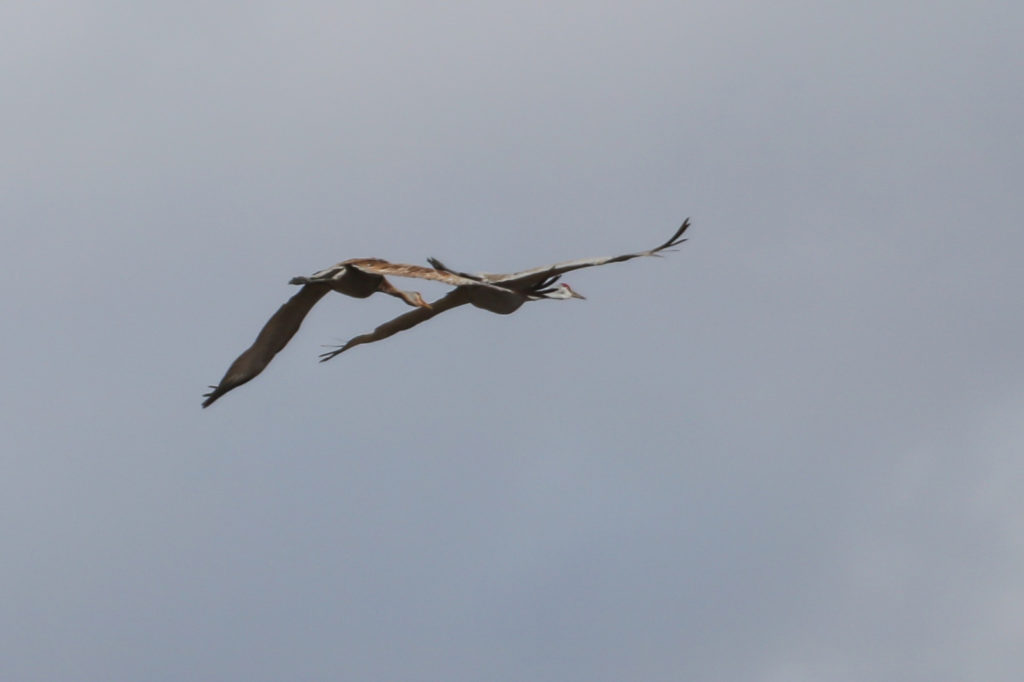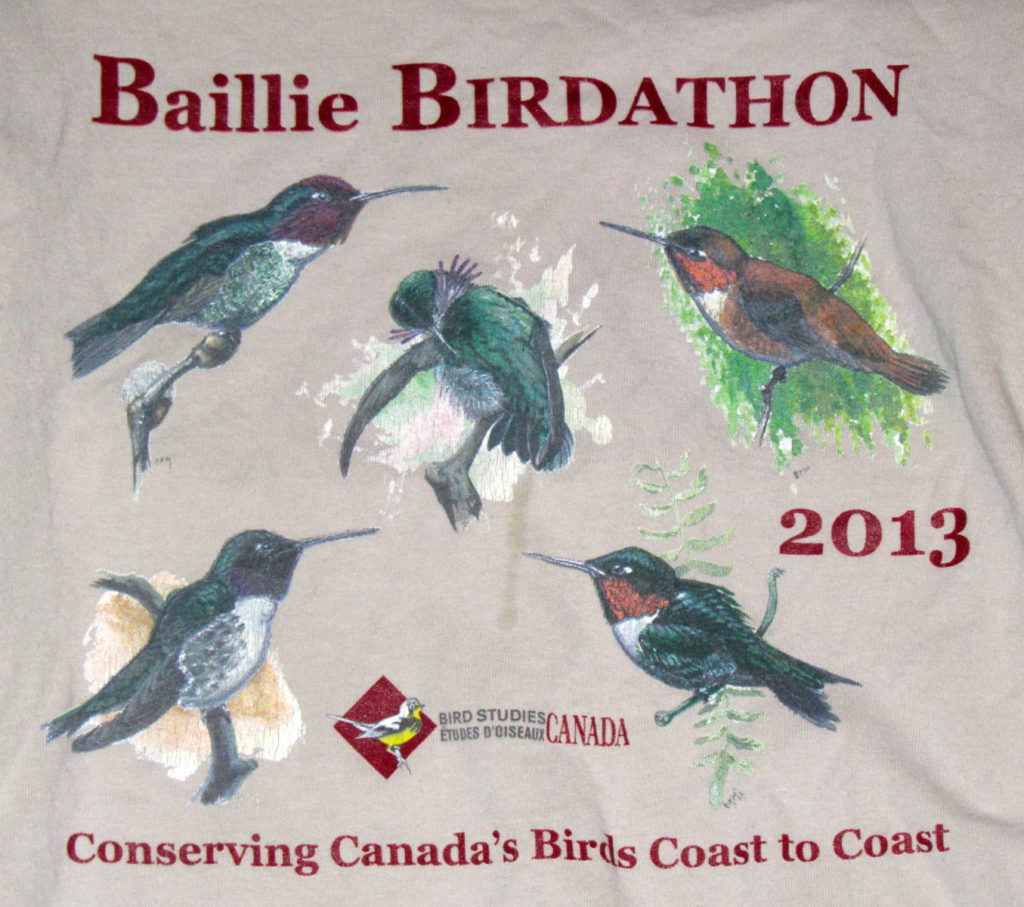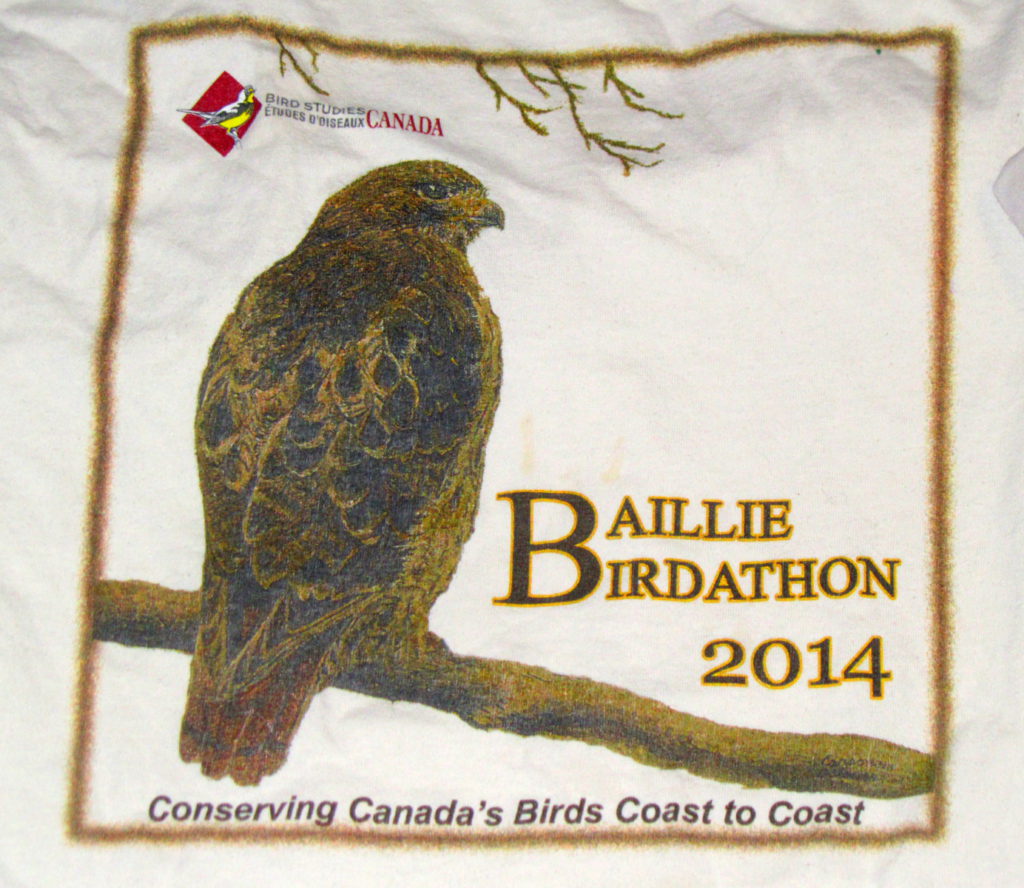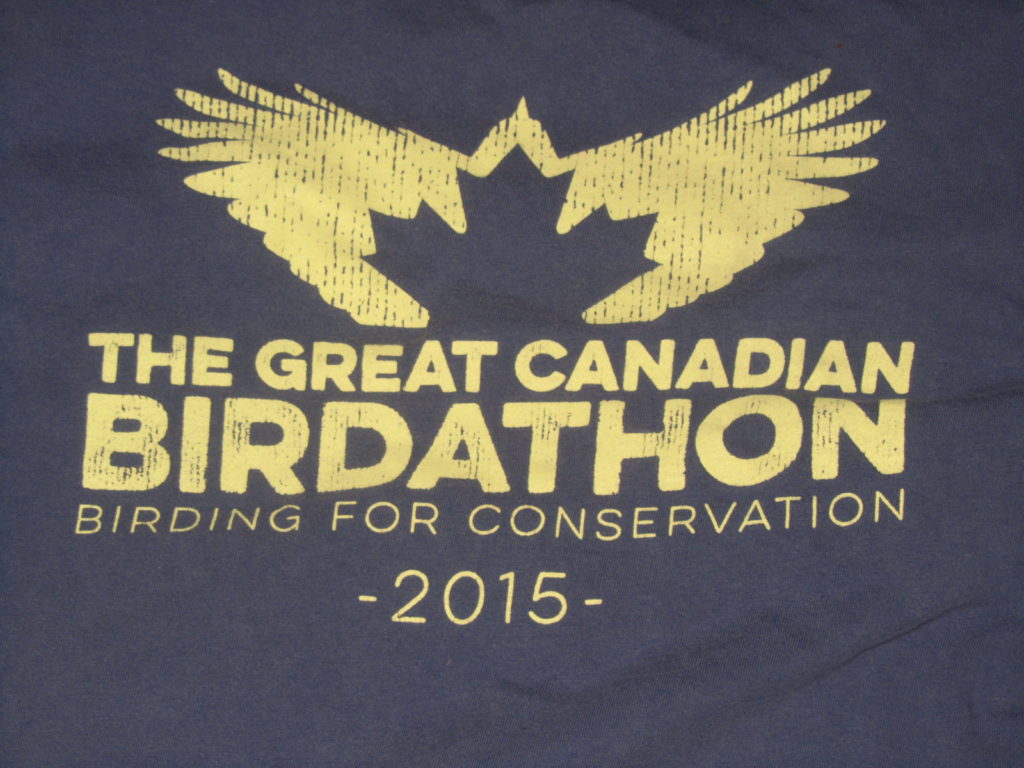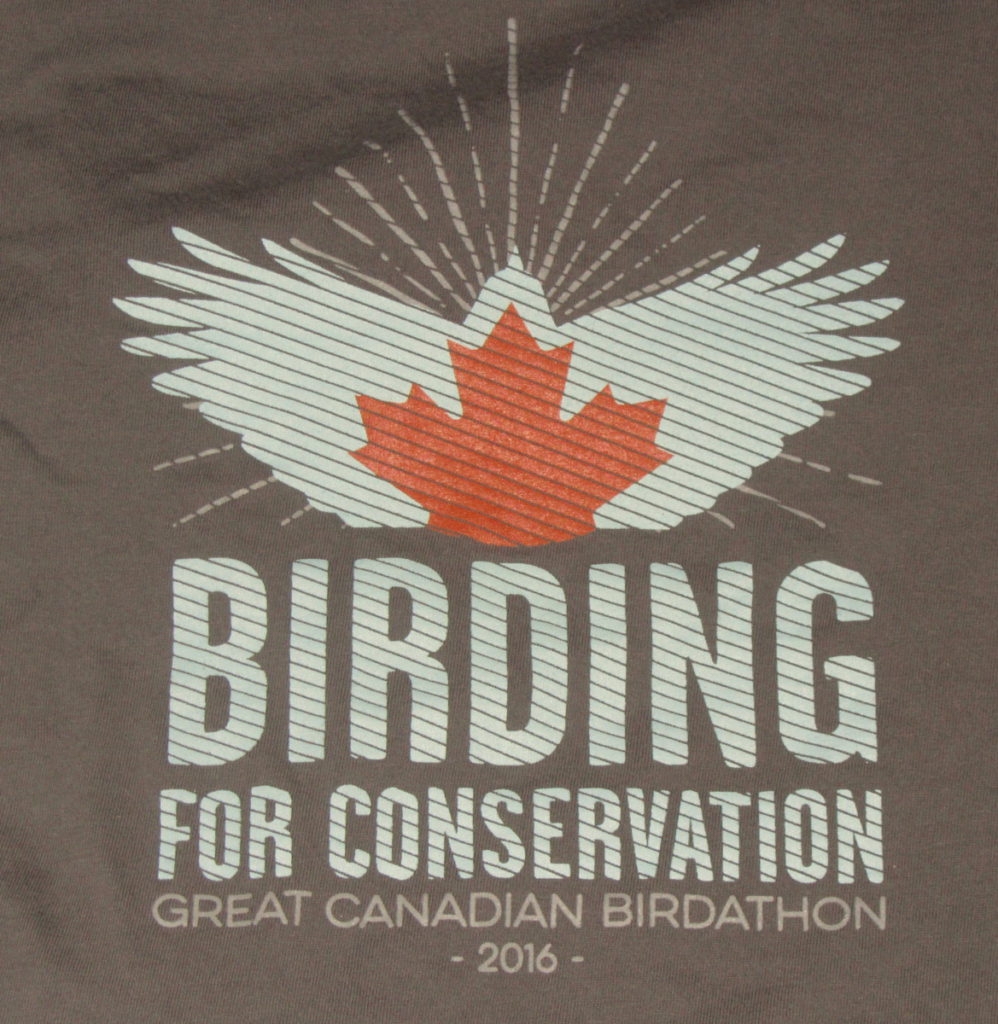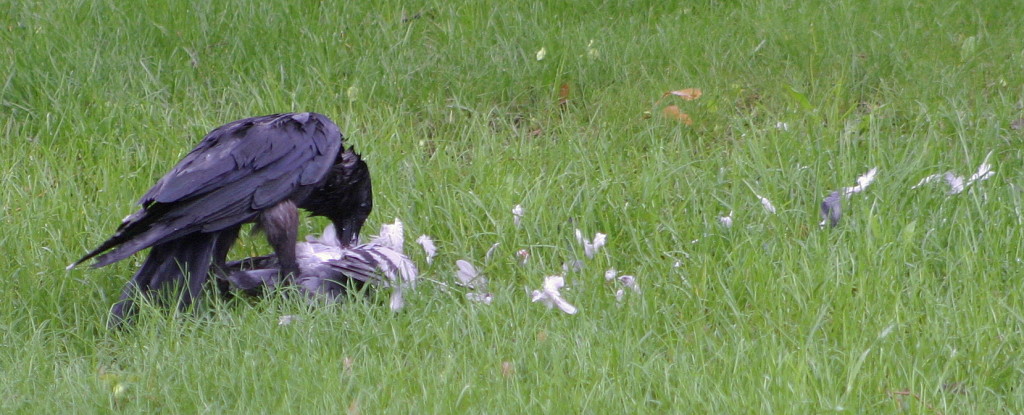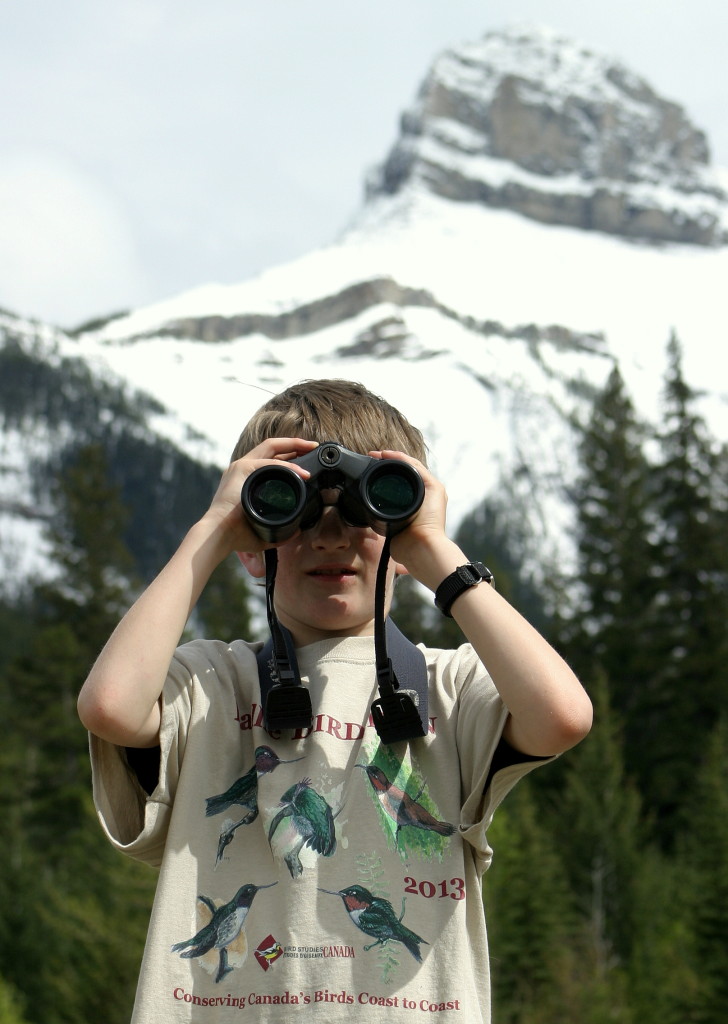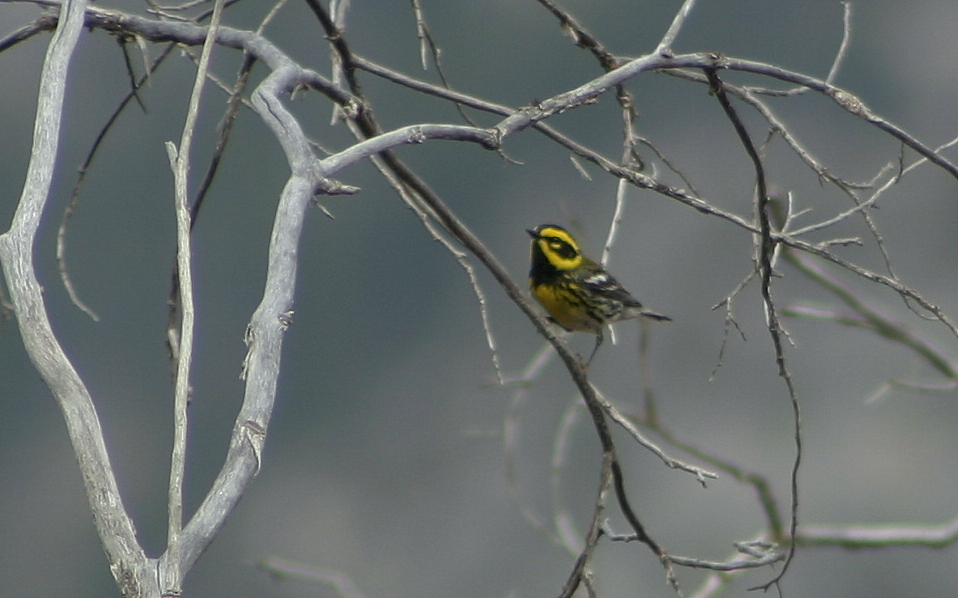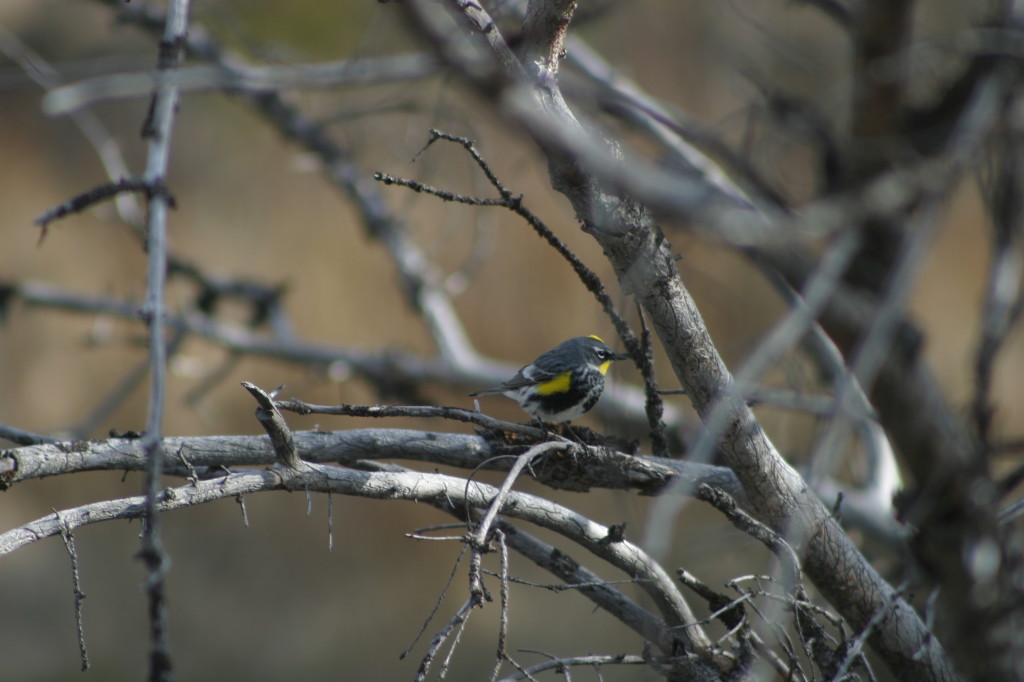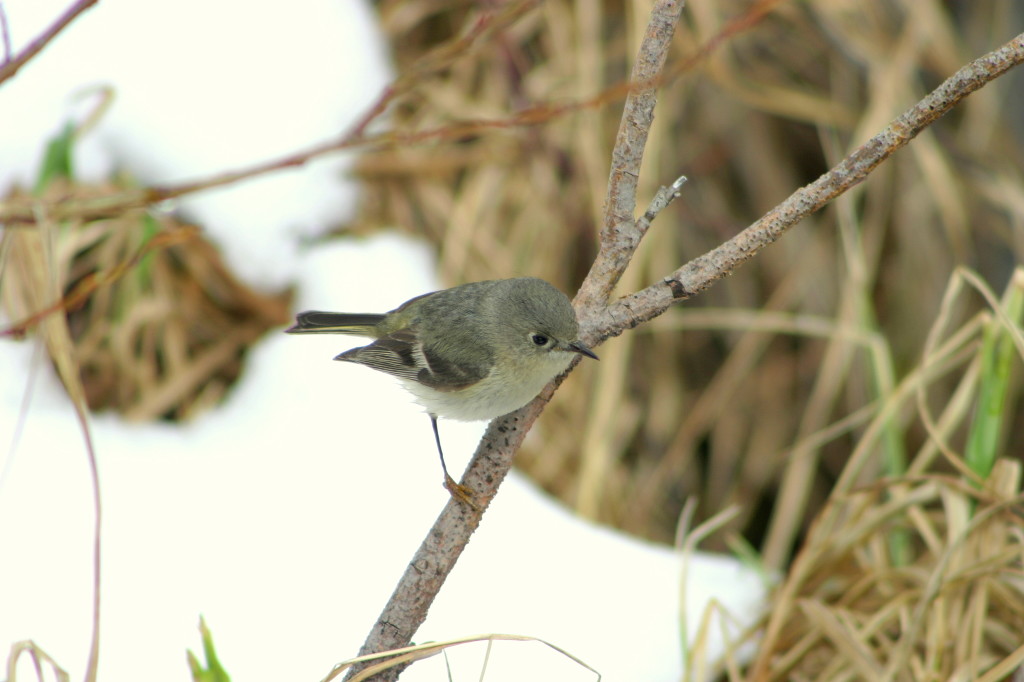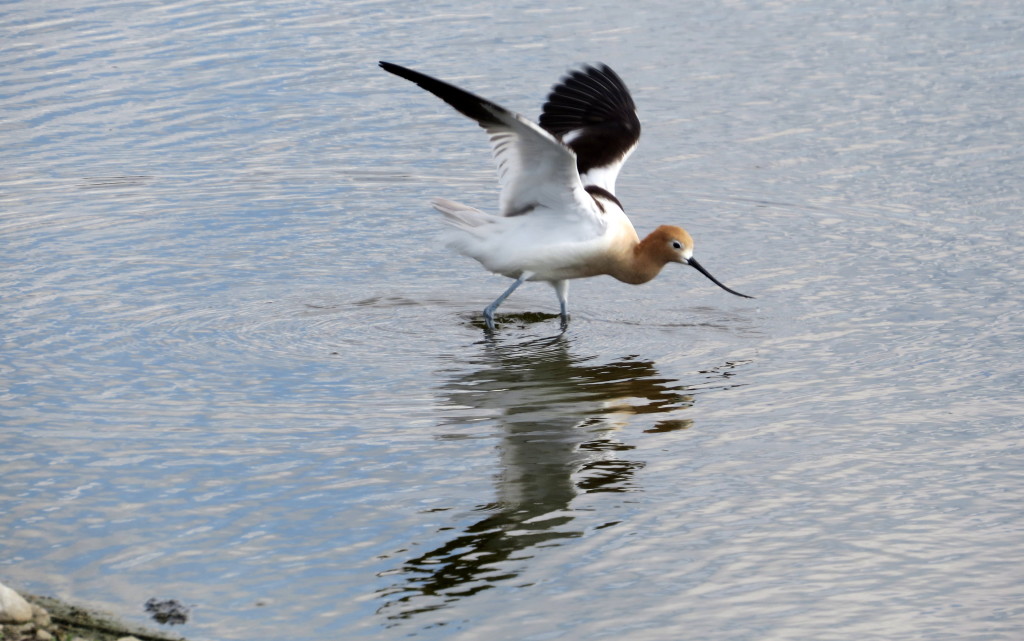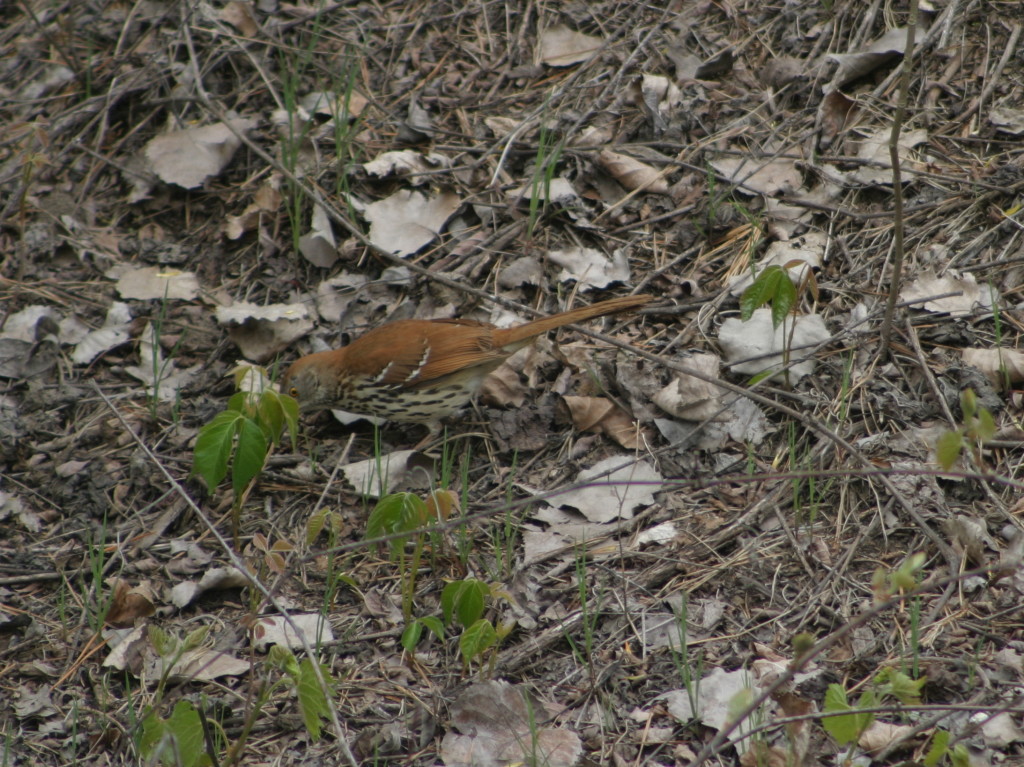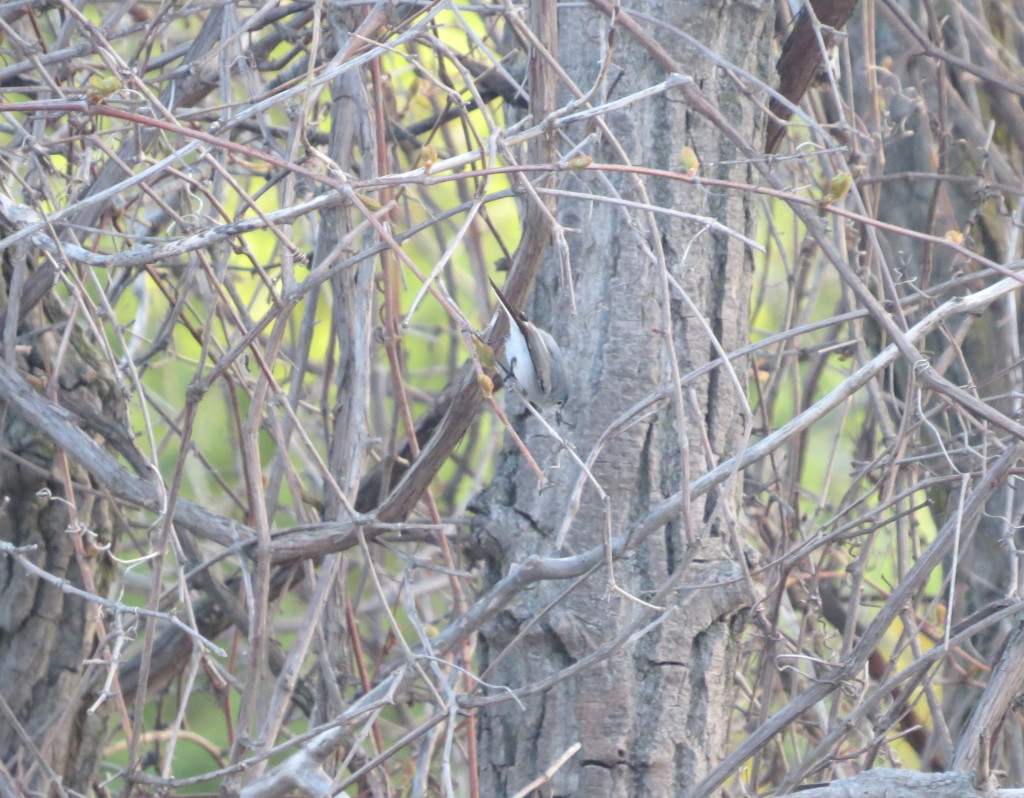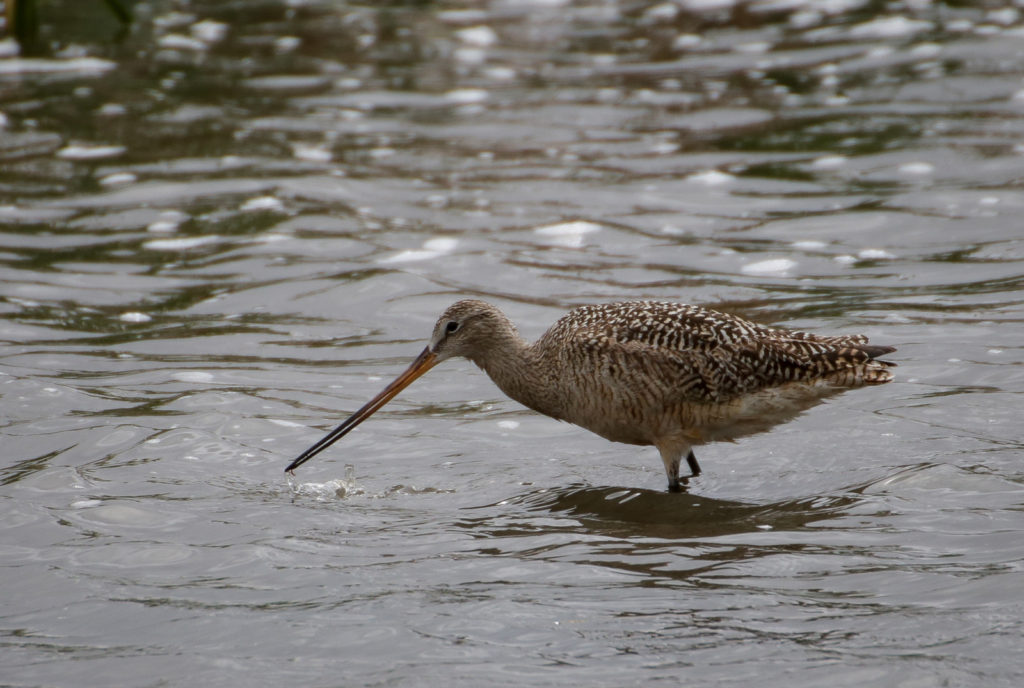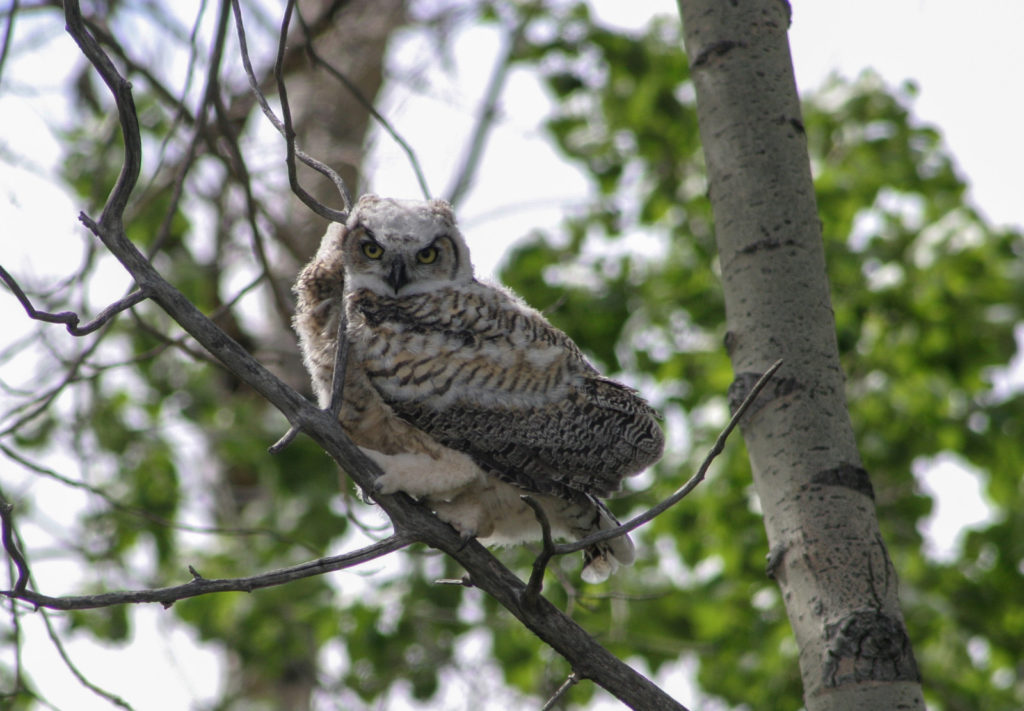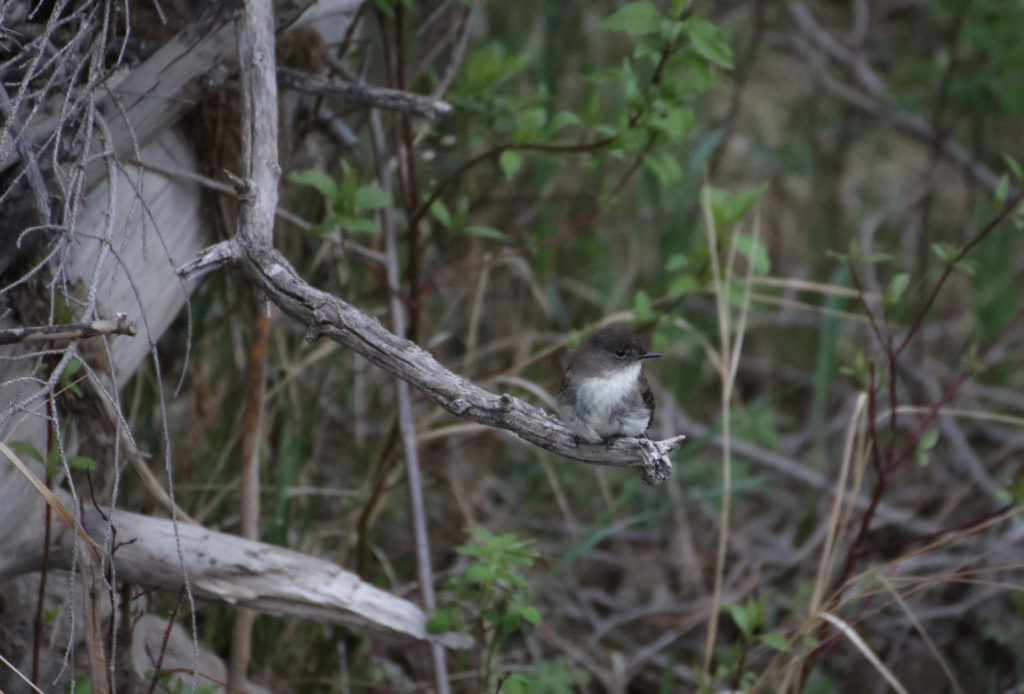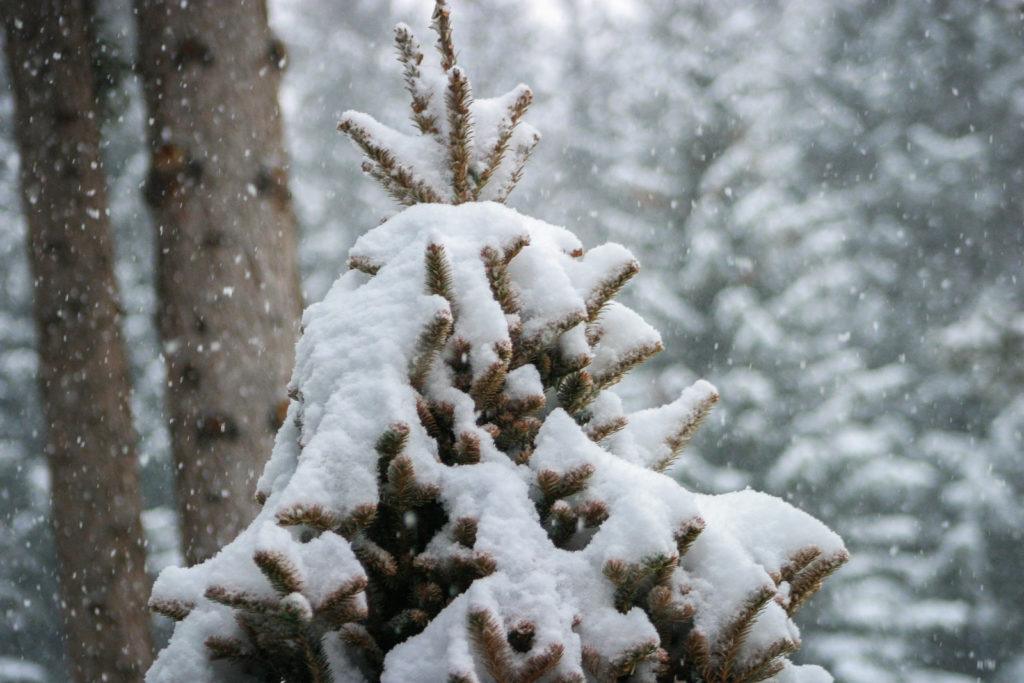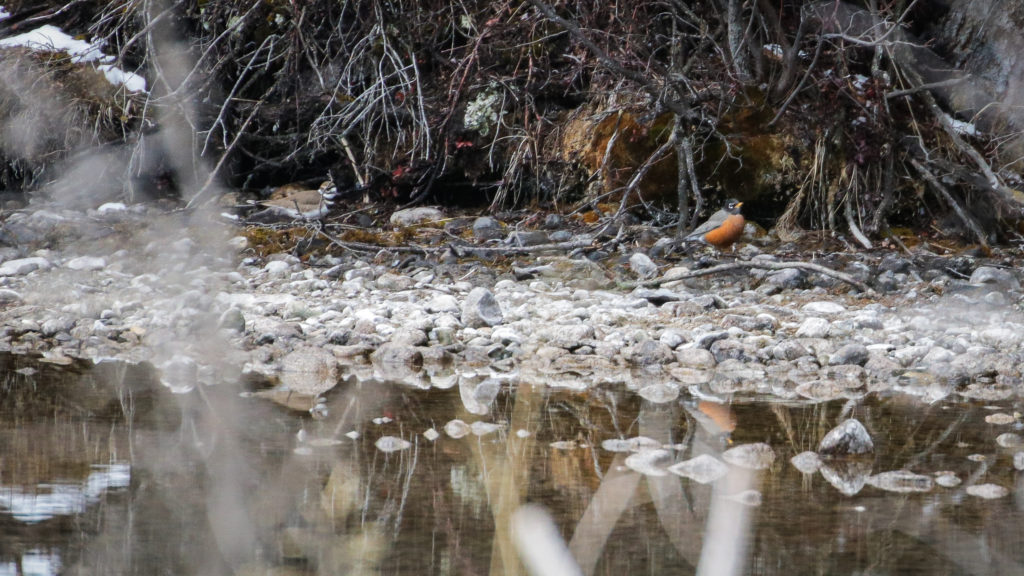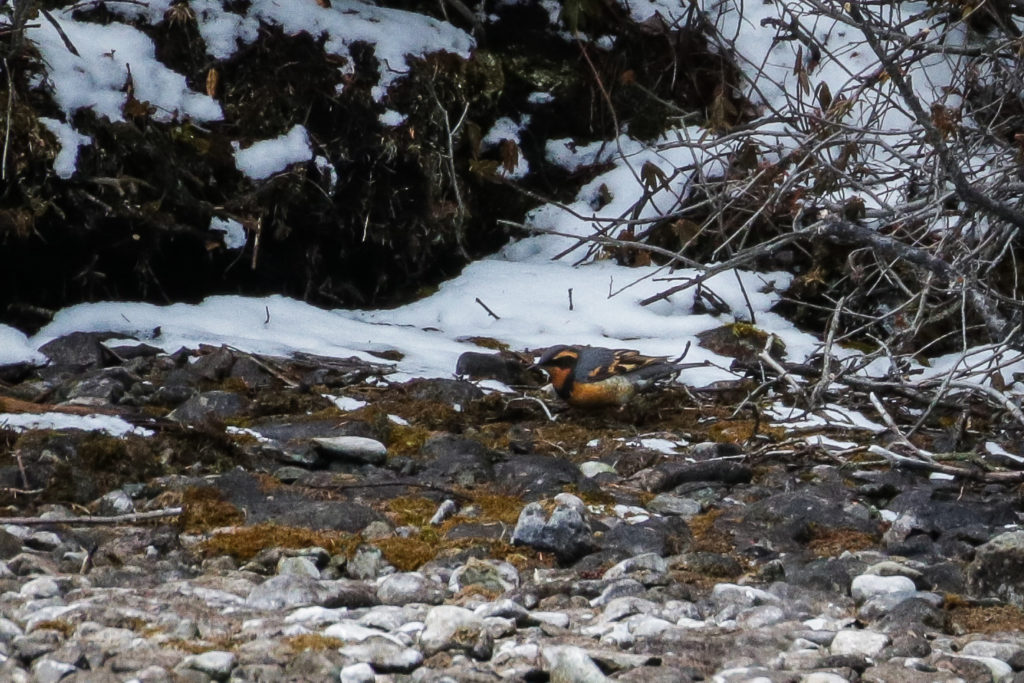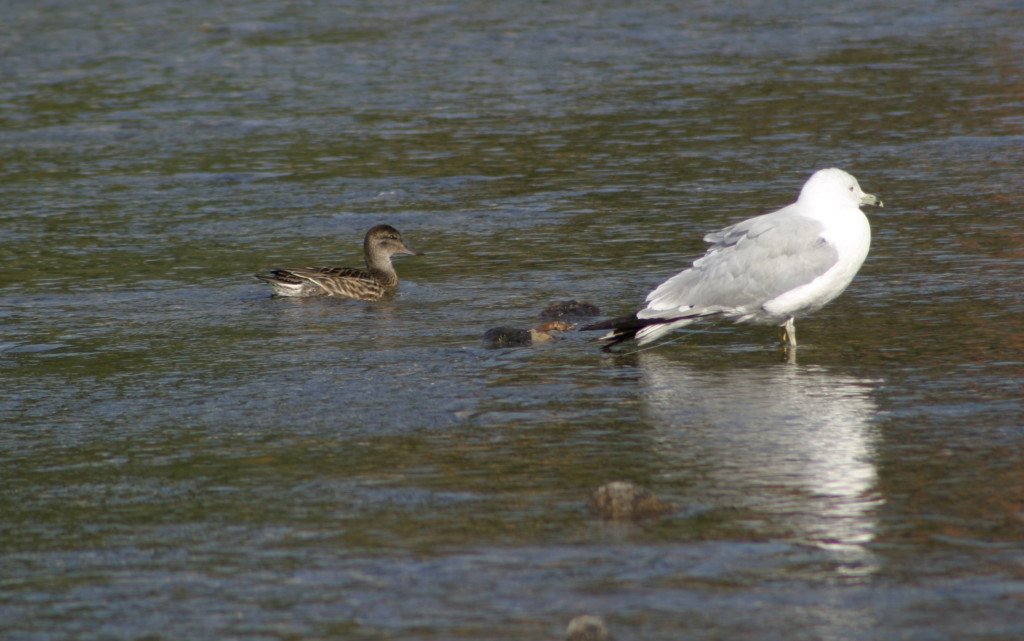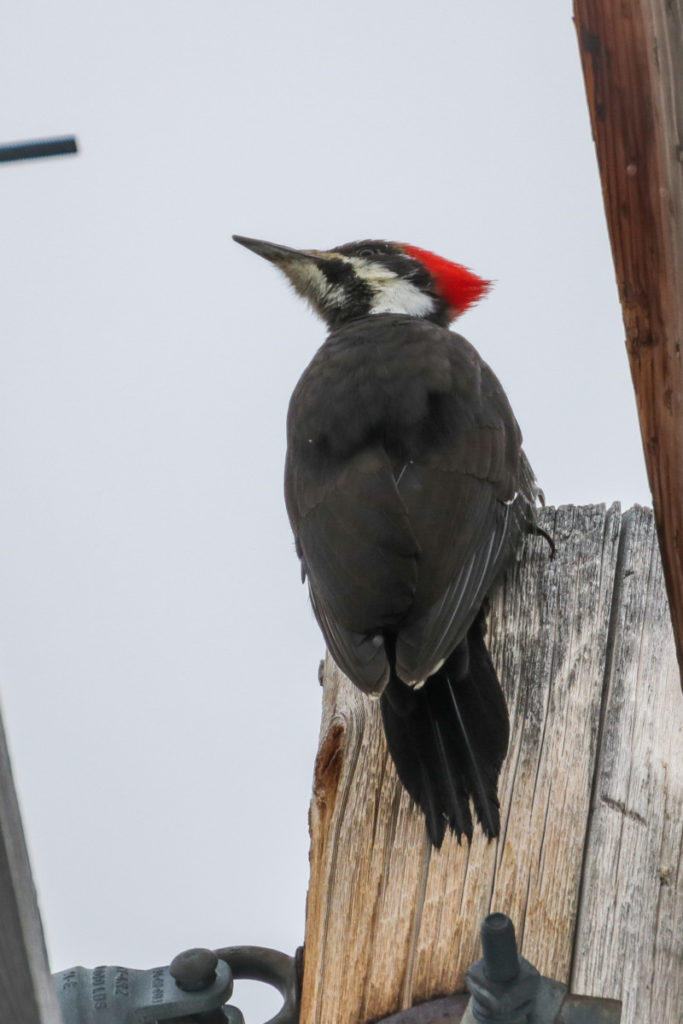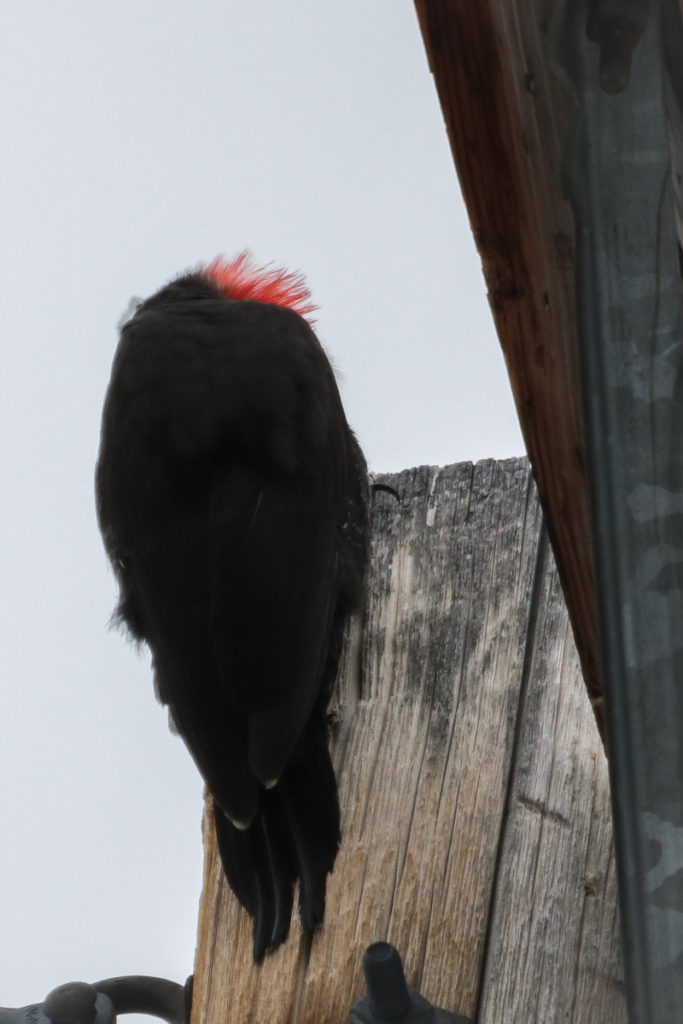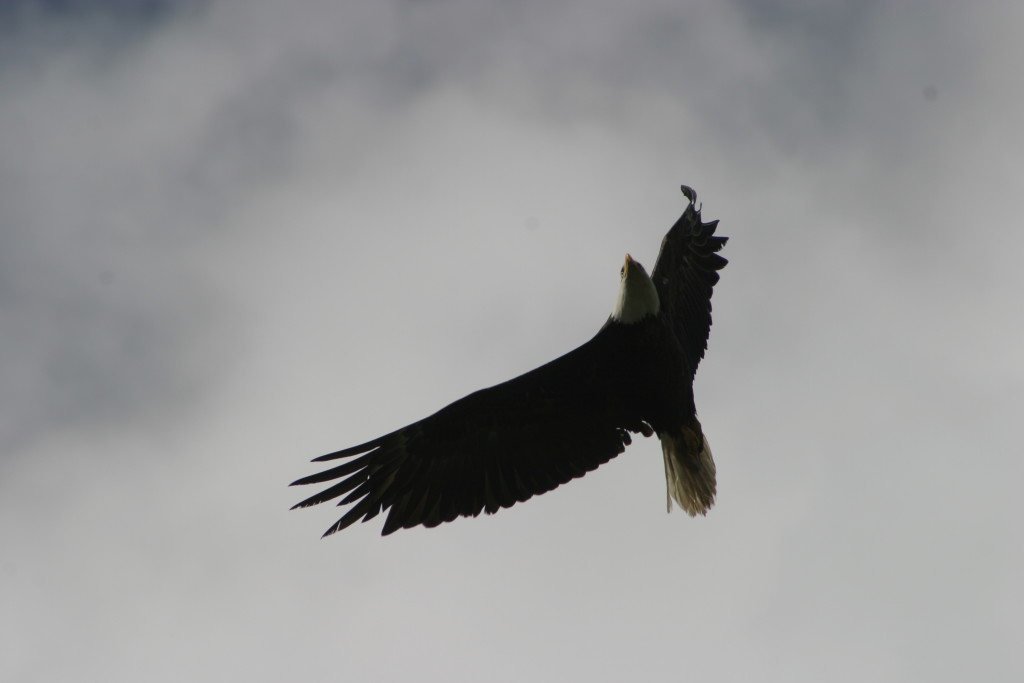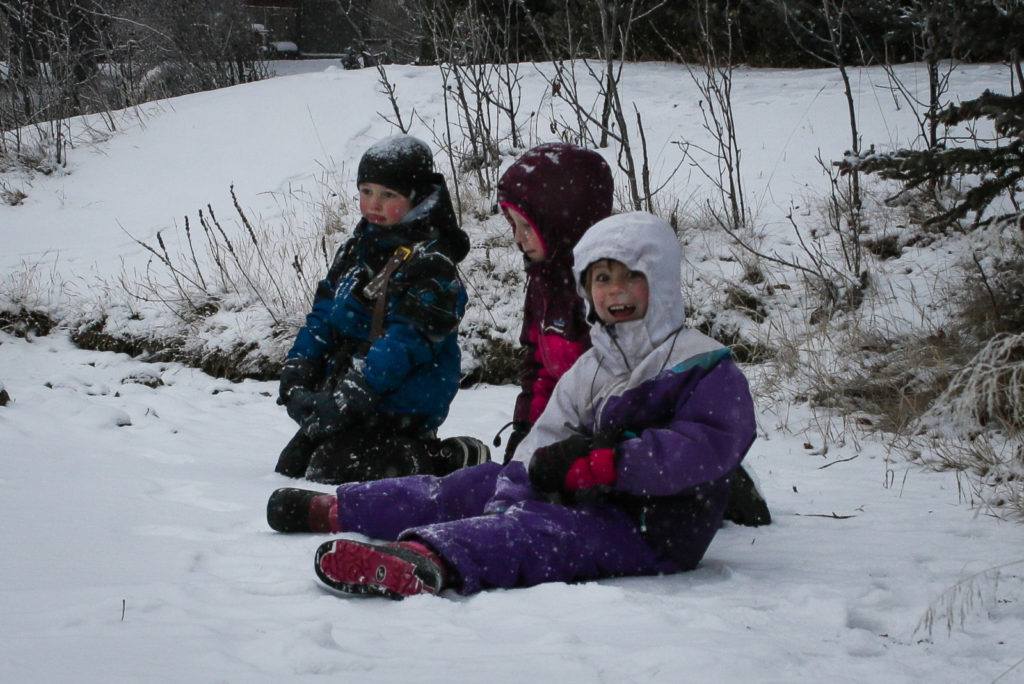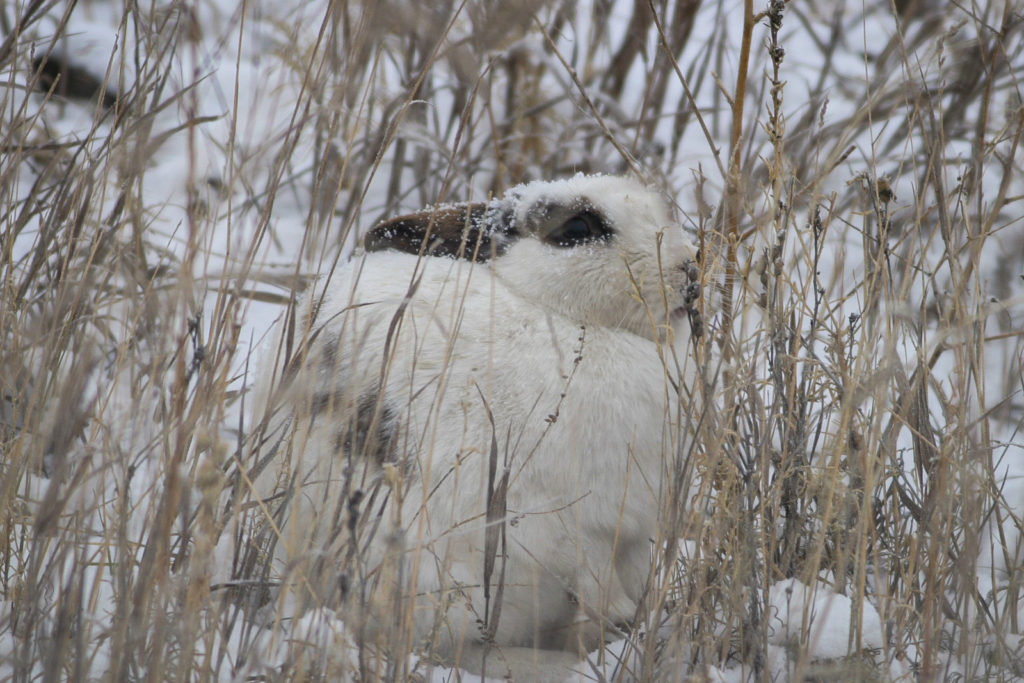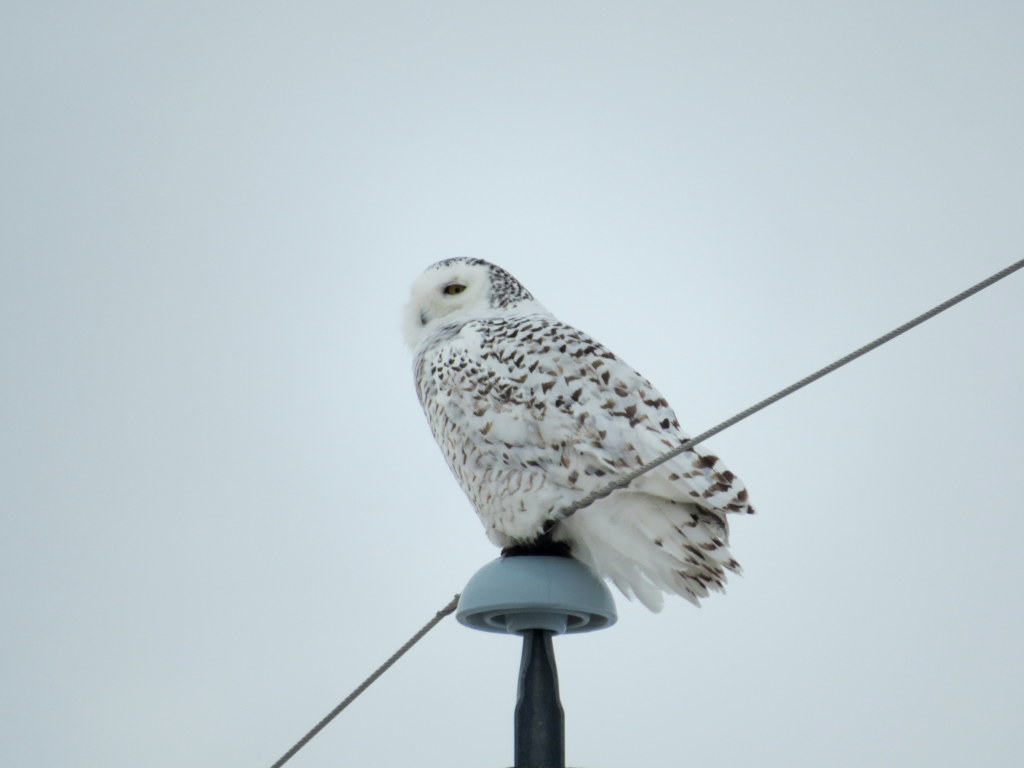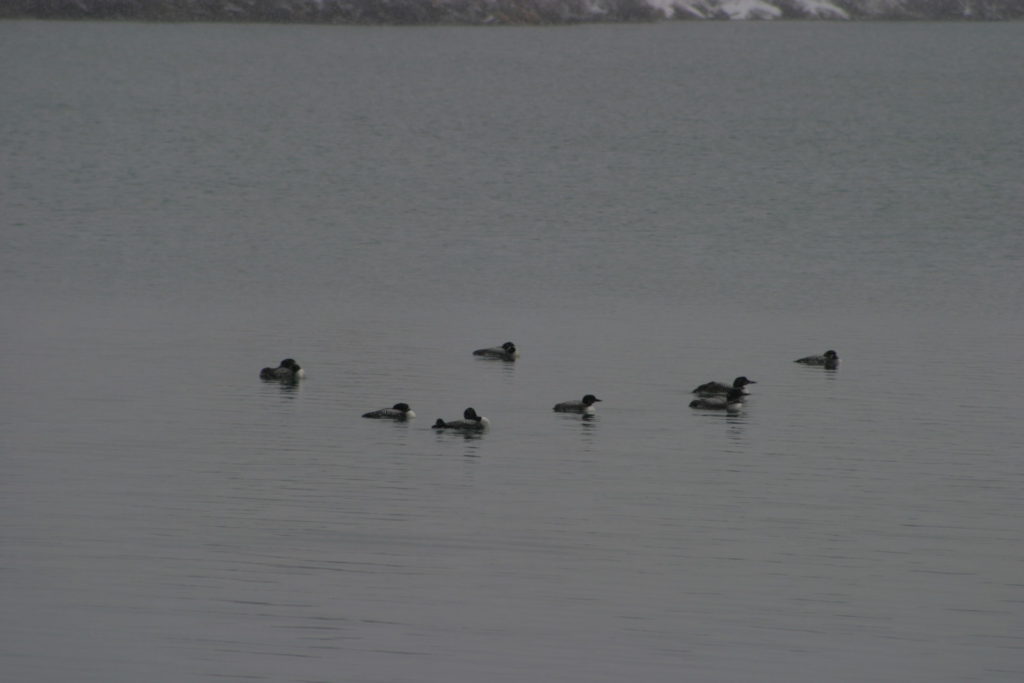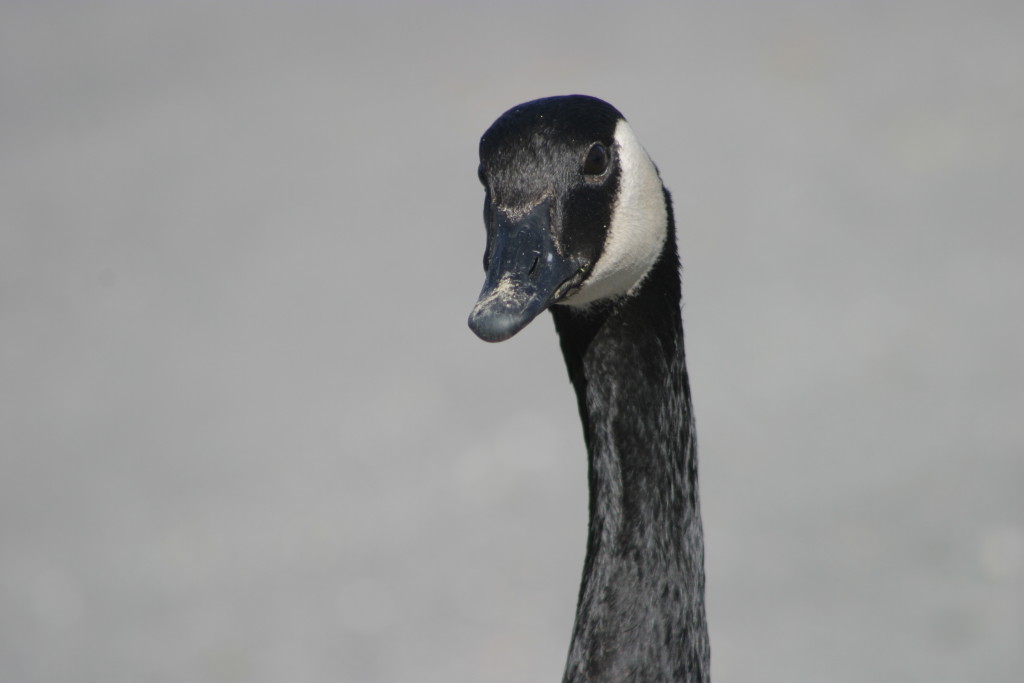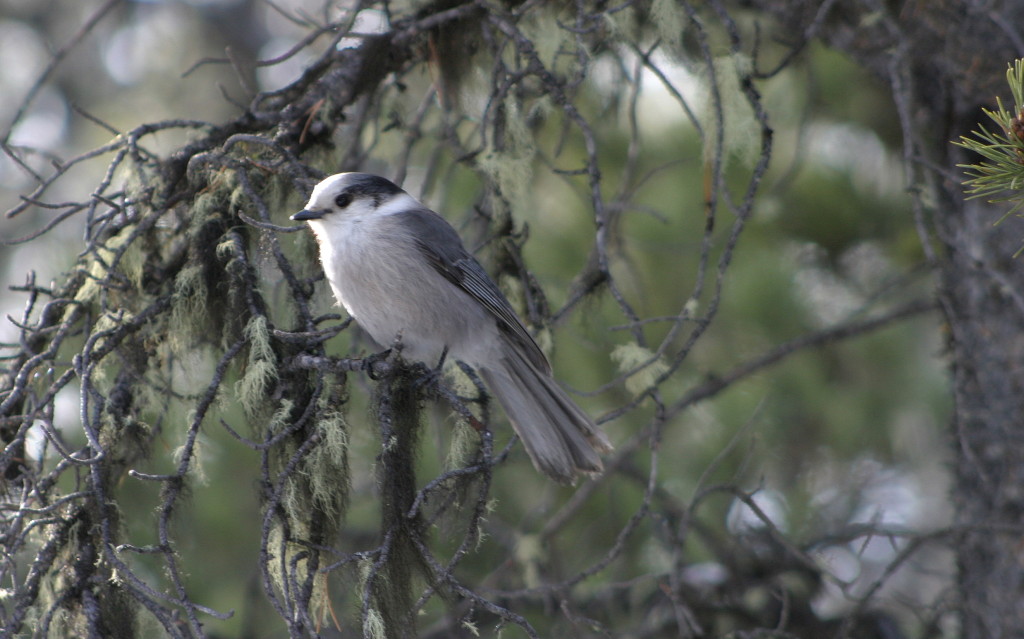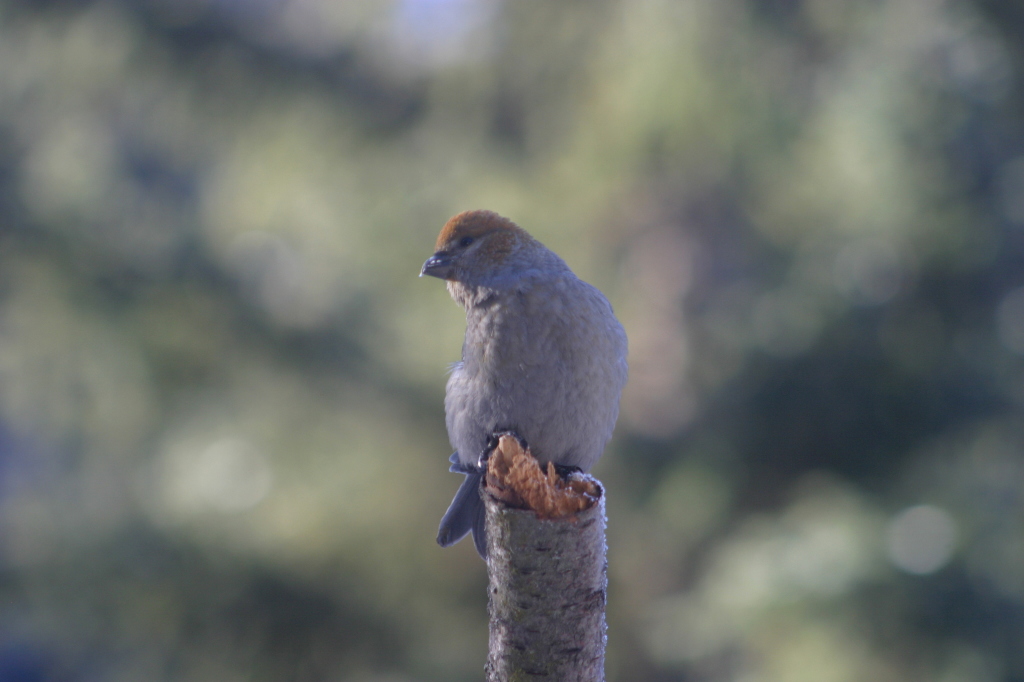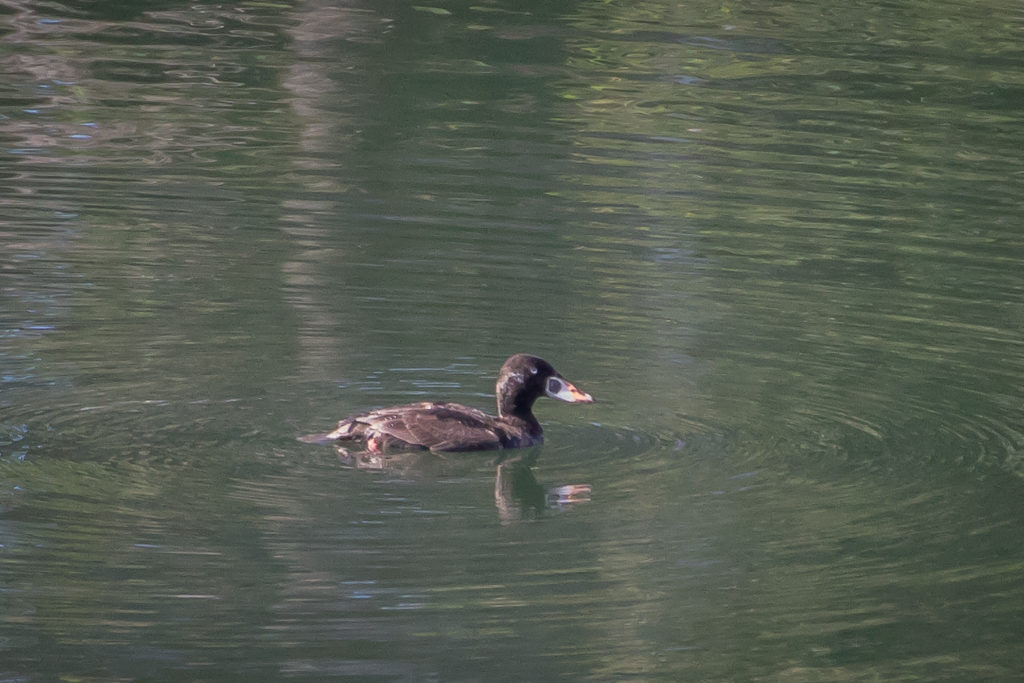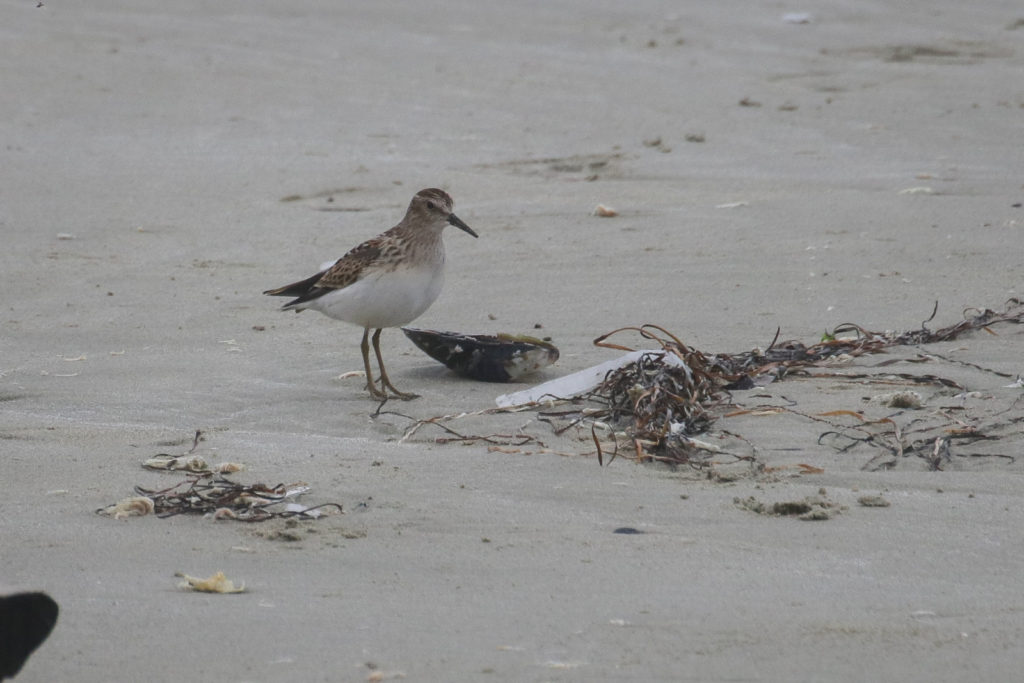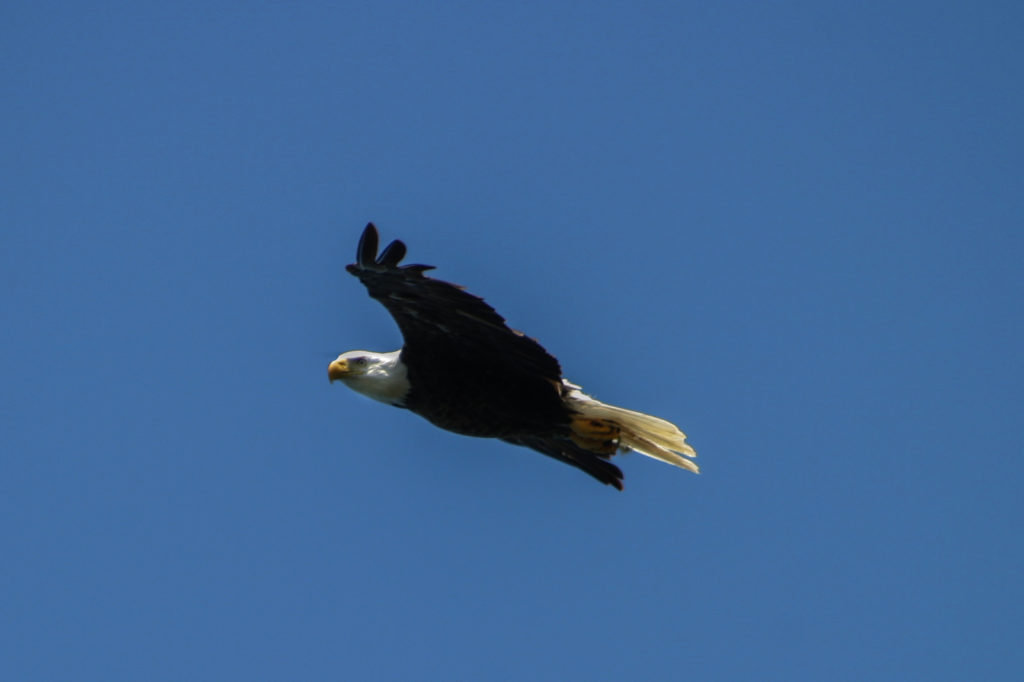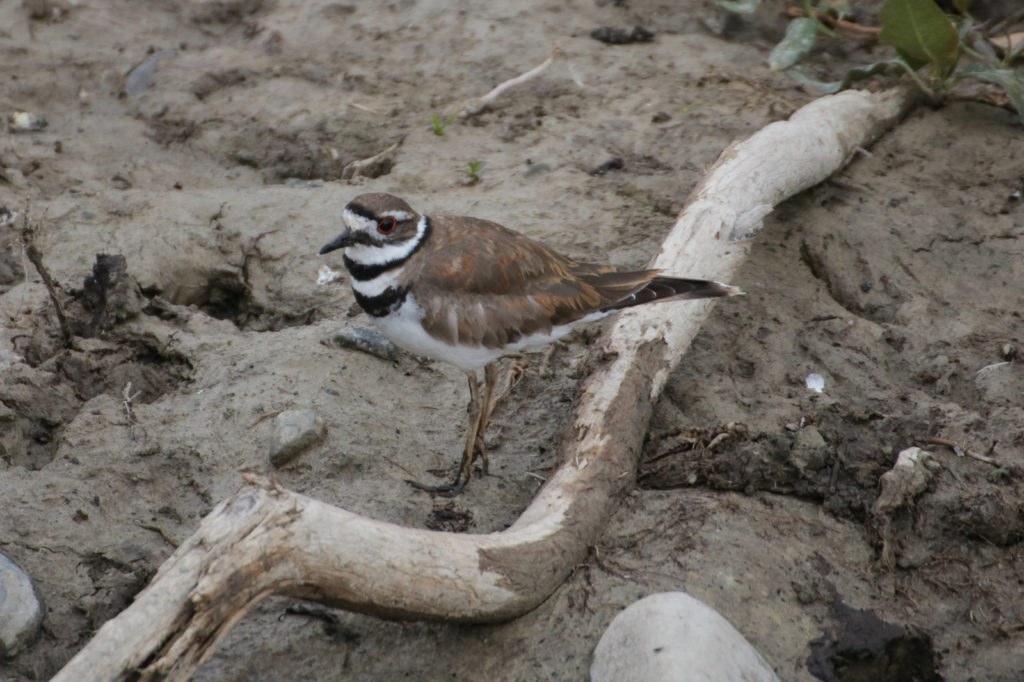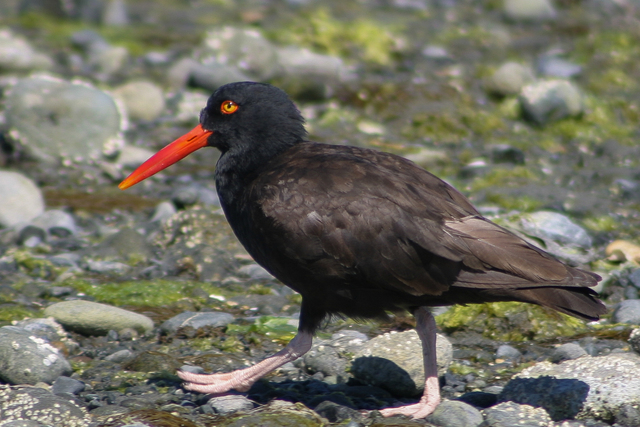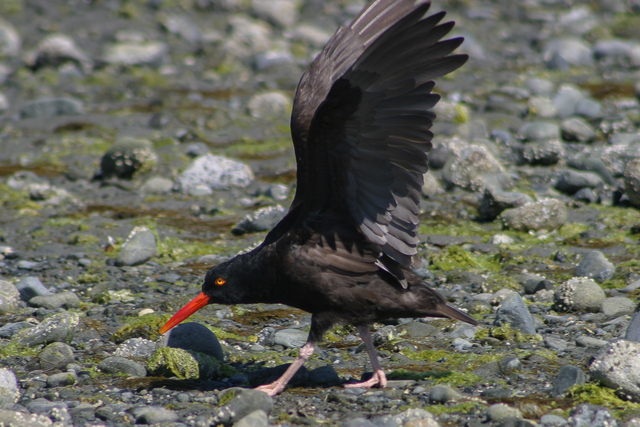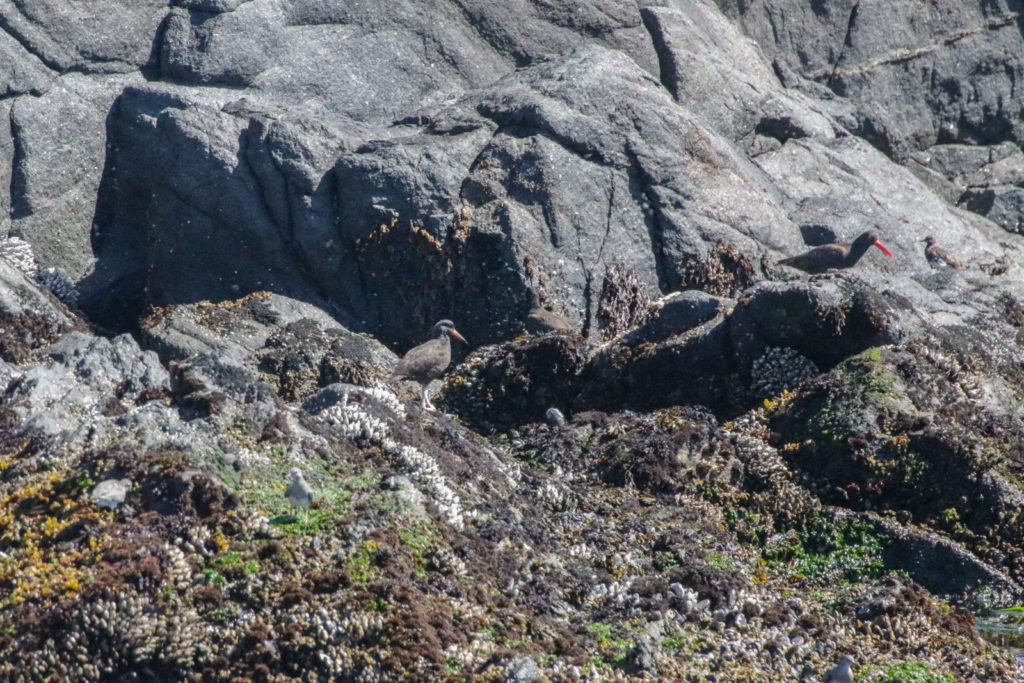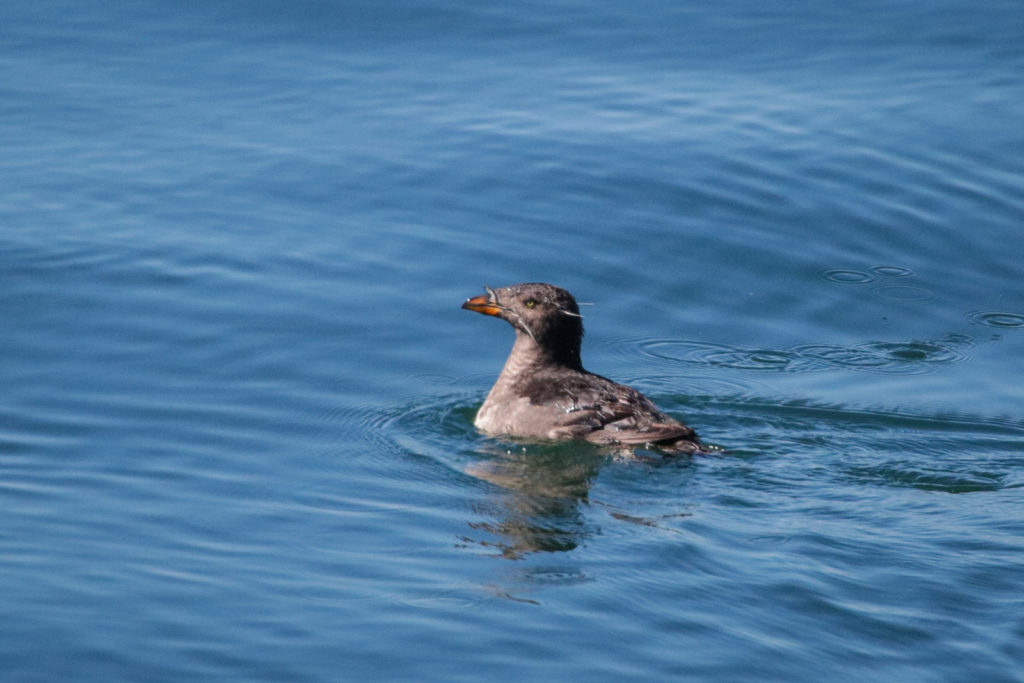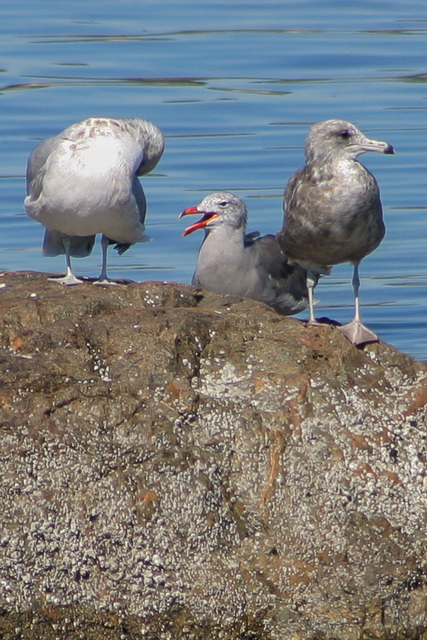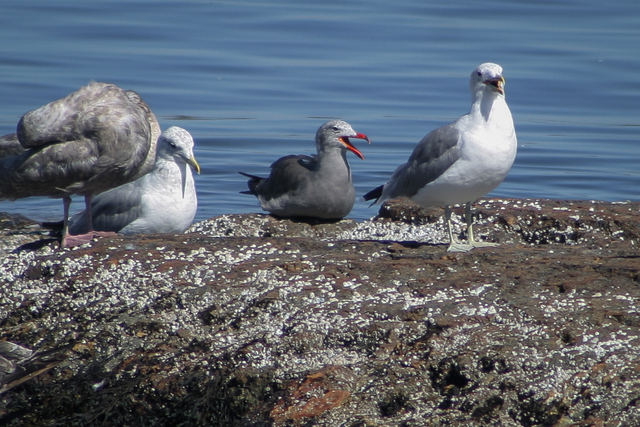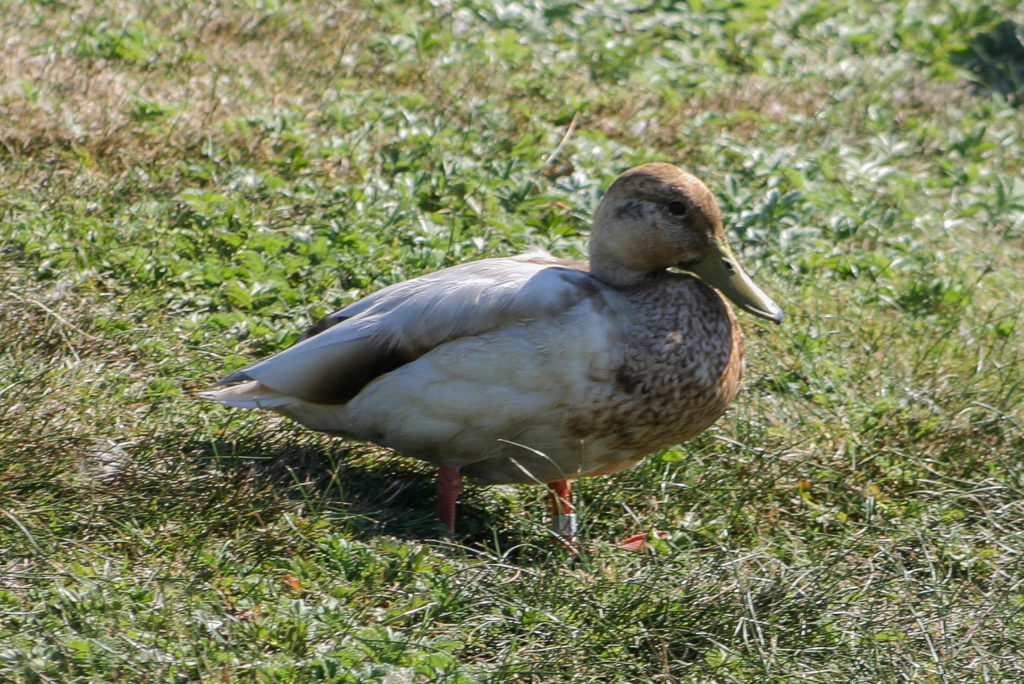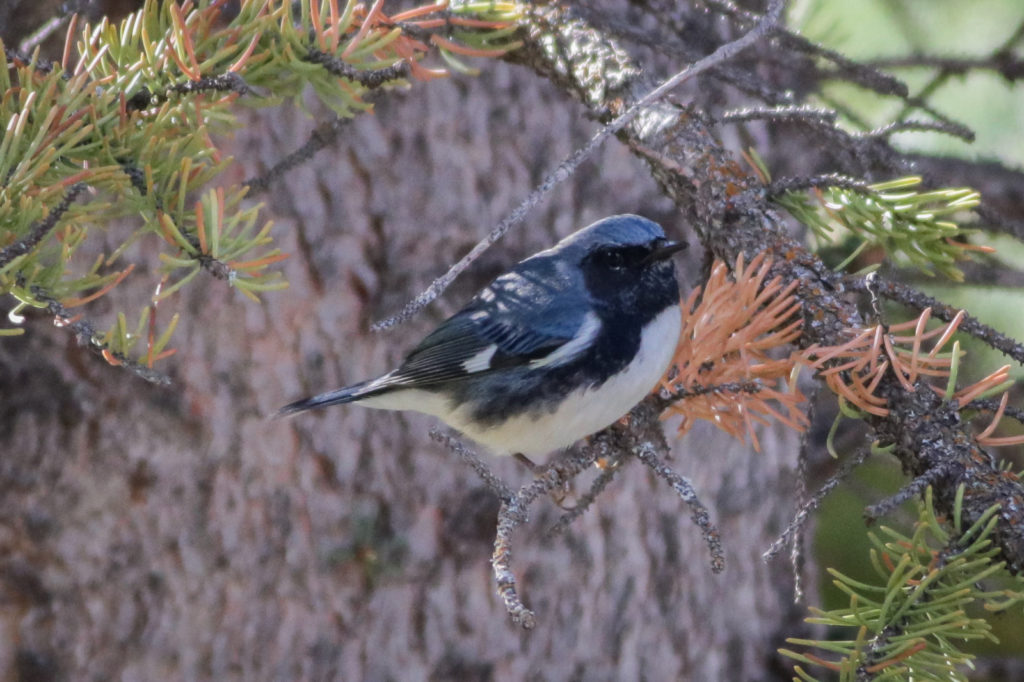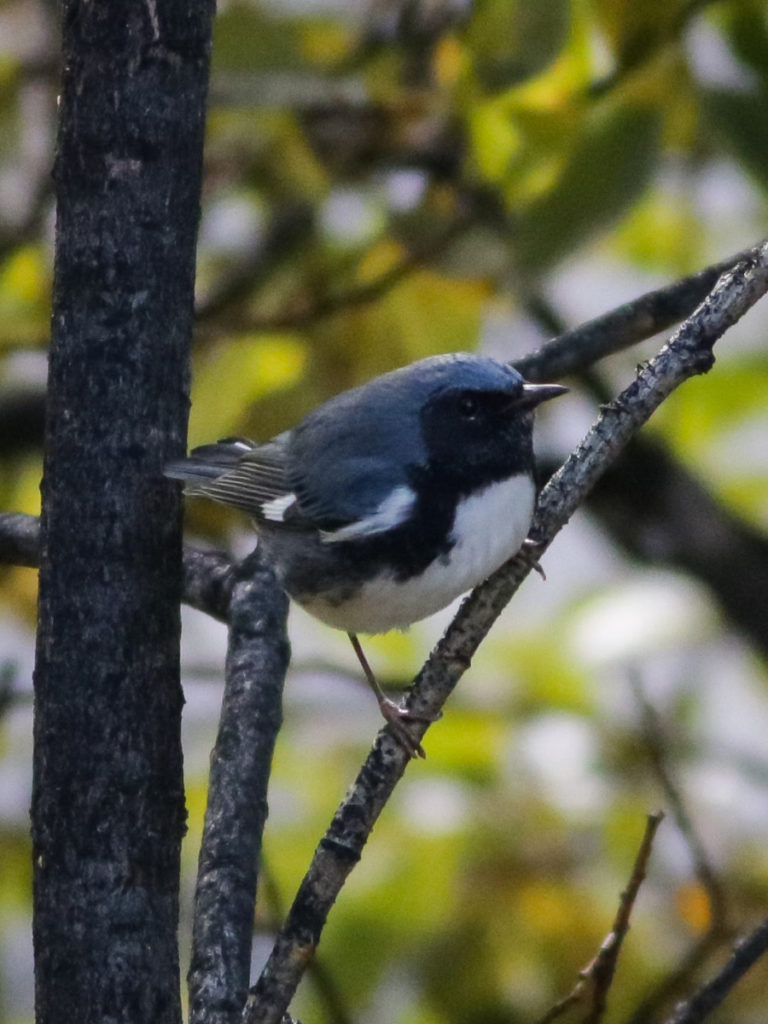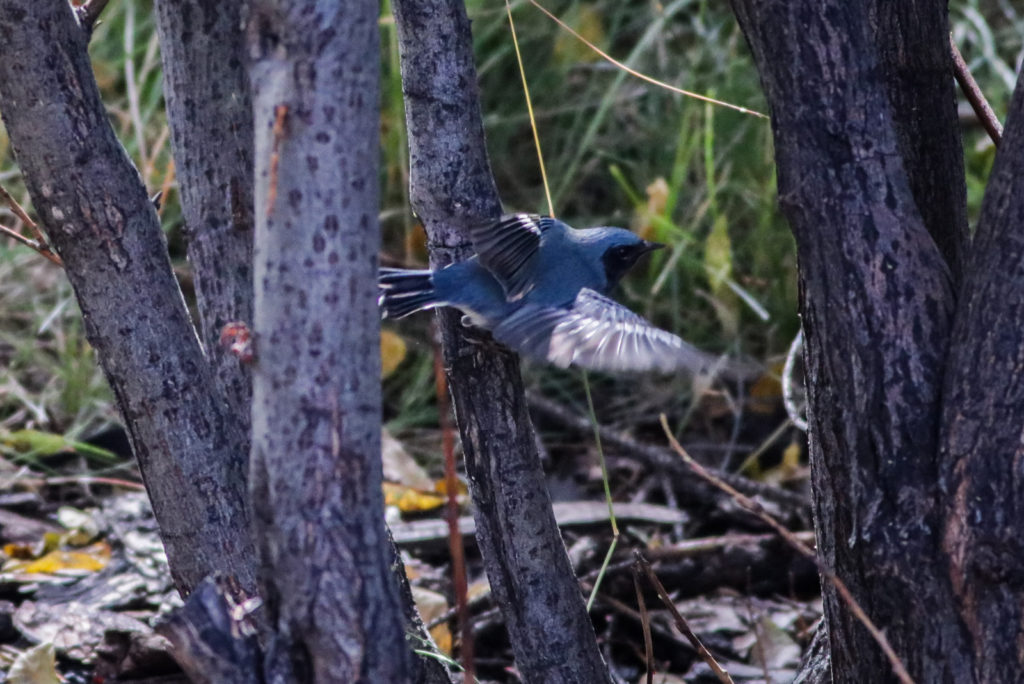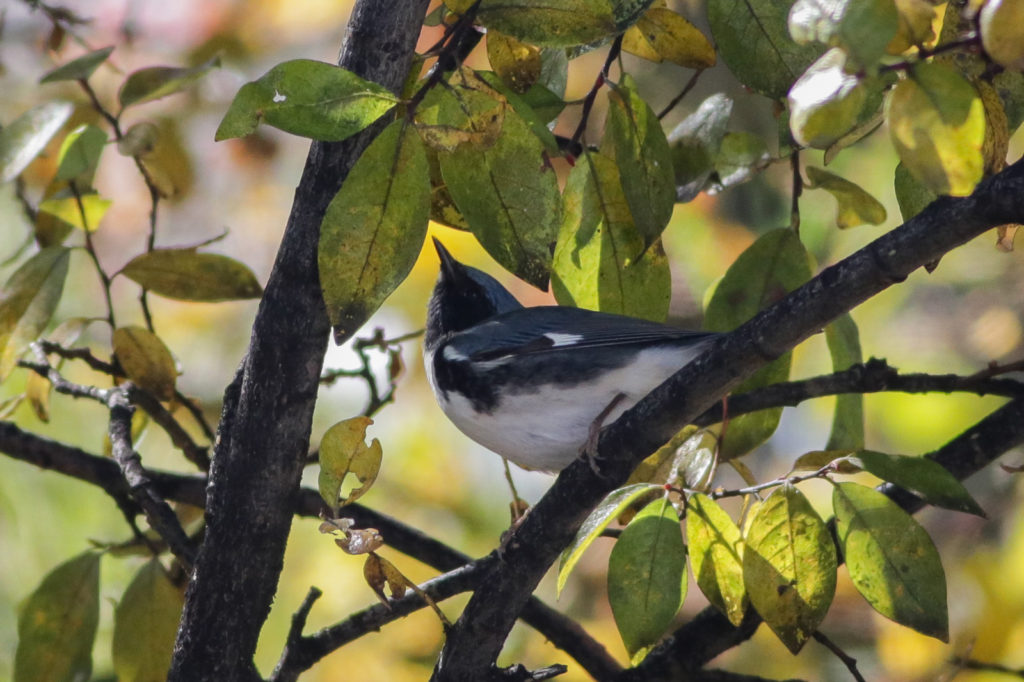We had puzzled over where to go during the spring break, as the suite that our friends owned in Kimberly had been sold. I wanted birds, my Mom needed ttranquillity and my Dad didn’t want to drive too far. The kids didn’t care – as long as there were rocks, trees, or snow to play on, they were fine. Flip-flopping between Edmonton and Waterton National Park, we eventually settled on the latter (though I now wish we had gone to south eastern Hanna – there was an Alberta first Common Crane there!).
During the four hour long drive, I observed many dabbling ducks and hawks, but little else. Briefly stopping over at Frank Lake, we found that it is bursting into Spring, supporting Greater and Lesser Scaups, Gadwall, Ruddy Duck and four Red-breasted Mergansers. I think that the male Red-breasted Merganser is probably the most beautiful bird I’ve seen – which means something. Unfortunately, they were half a kilometre out, and we obtained no good photos.
Continuing to Waterton, we identified meadowlarks hawking from roadside poles and hawks hovering over the rolling meadows. When we eventually reached the diminutive hamlet of Waterton, I was surprised at the exact measure of solitude – there was only one shop open in the whole area! I do not believe that we saw more than 10 people the entire time.
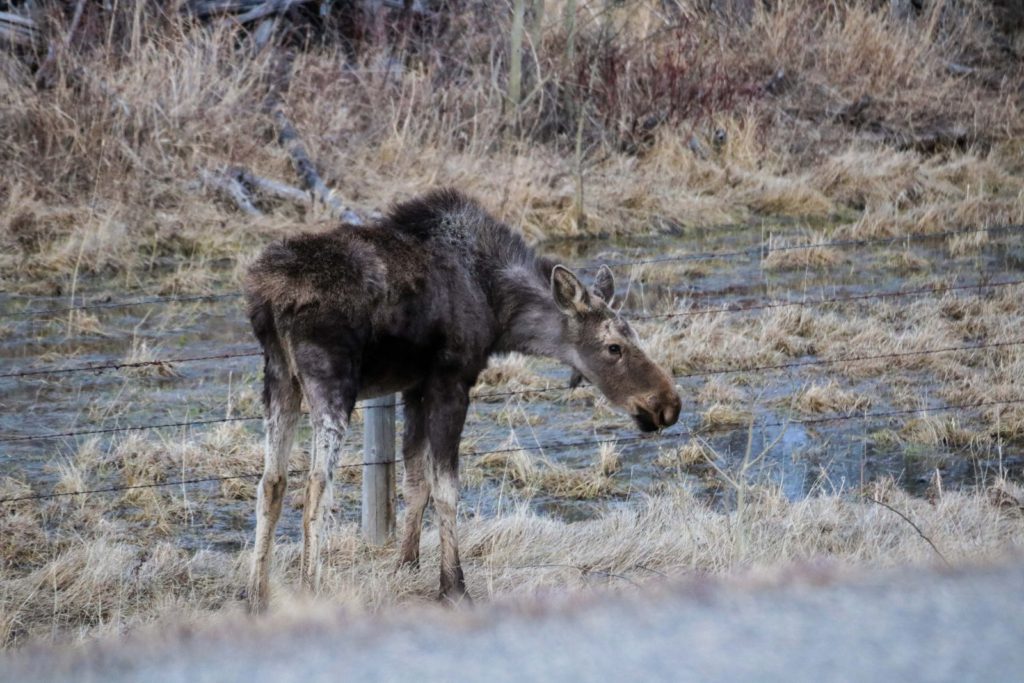
Waterton is very windy, with winter winds whistling through at an average 100 km per hour. Not enough to blow you over, but it can make it tough to hold your camera steady. Despite this, we manged to pick up quite a few species at the Hay Barnes Trail, an excellent short walk for anyone in the area. There is a theory that the first five minutes after you get somewhere are the best, and this was hardly disputed when an adult Prairie Falcon skimmed the long, waving grasses within a minute of our arrival. It alighted on a tall aspen and surveyed the surrounding fields. It took off a second later, joining a high-flying Red-tailed Hawk. However, as is often the case in these things, the fragile peace between the two raptors was broken when a Common Raven came hurtling out of the sky at the Hawk. The falcon joined in, and soon all three had disappeared over the hilly horizon.
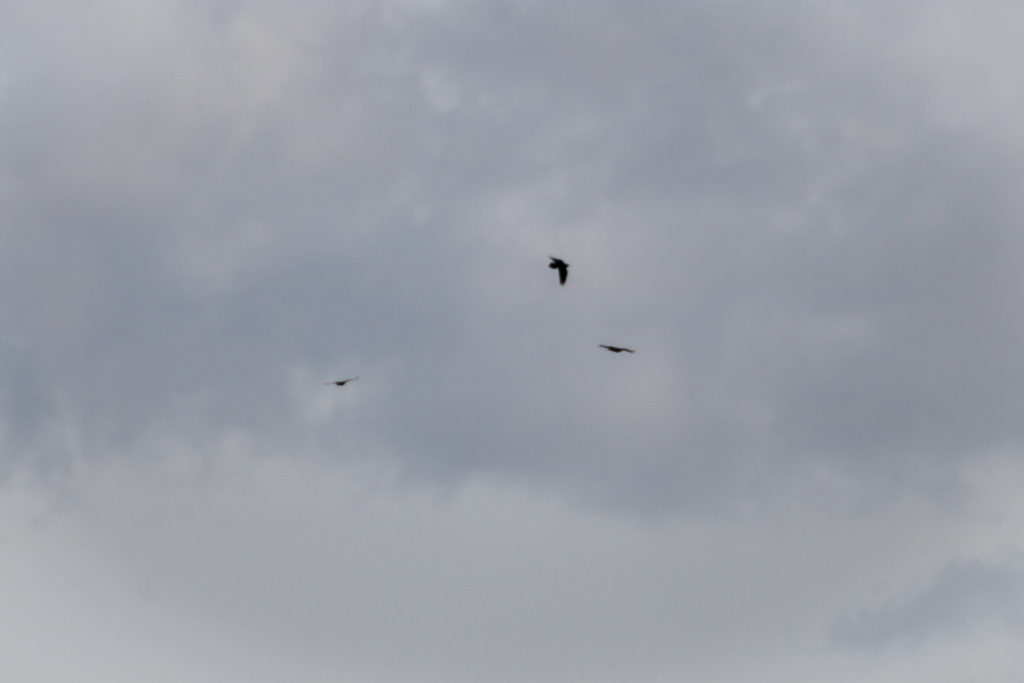
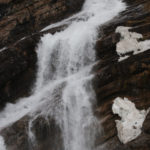
Upon our return to Waterton, we found three American Dippers broadcasting their songs by bouncing them off the stony cliffs by the waterfall. The other treasures occurred during the 50 km drive between Waterton and Pincher Creek, which we completed three or four times. Great-horned Owls, Northern Harriers and Golden Eagles supplemented the Red-tailed Hawks, while countless Mountain Bluebirds sang from the fence line. Every once in a while, we saw some Sandhill Cranes or Red-winged Blackbirds.
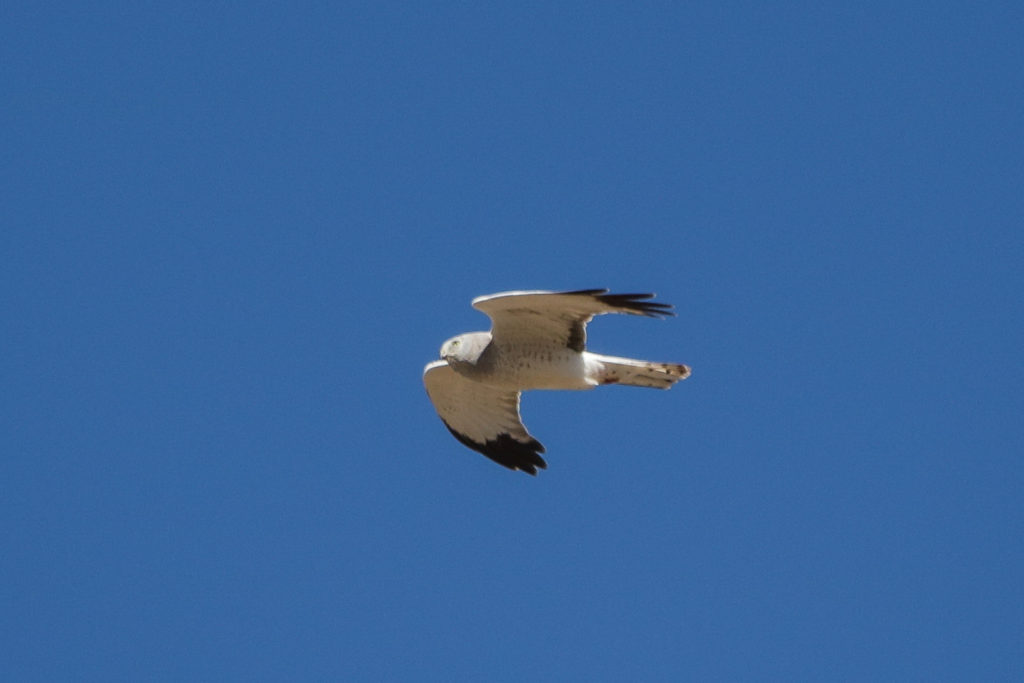
Naturally, when we returned, we learned of the Western Bluebird, the Cassin’s Finch, and that blasted bird, my nemesis, the Short-eared Owl that had been seen. Why oh why must those annoying owls insist on avoiding me? Oh well.
That’s all from me, but I’ll post more as migration continues. In the mean time, please consider donating to my Great Canadian Birdathon if you haven’t already. Thank you to all who have!
